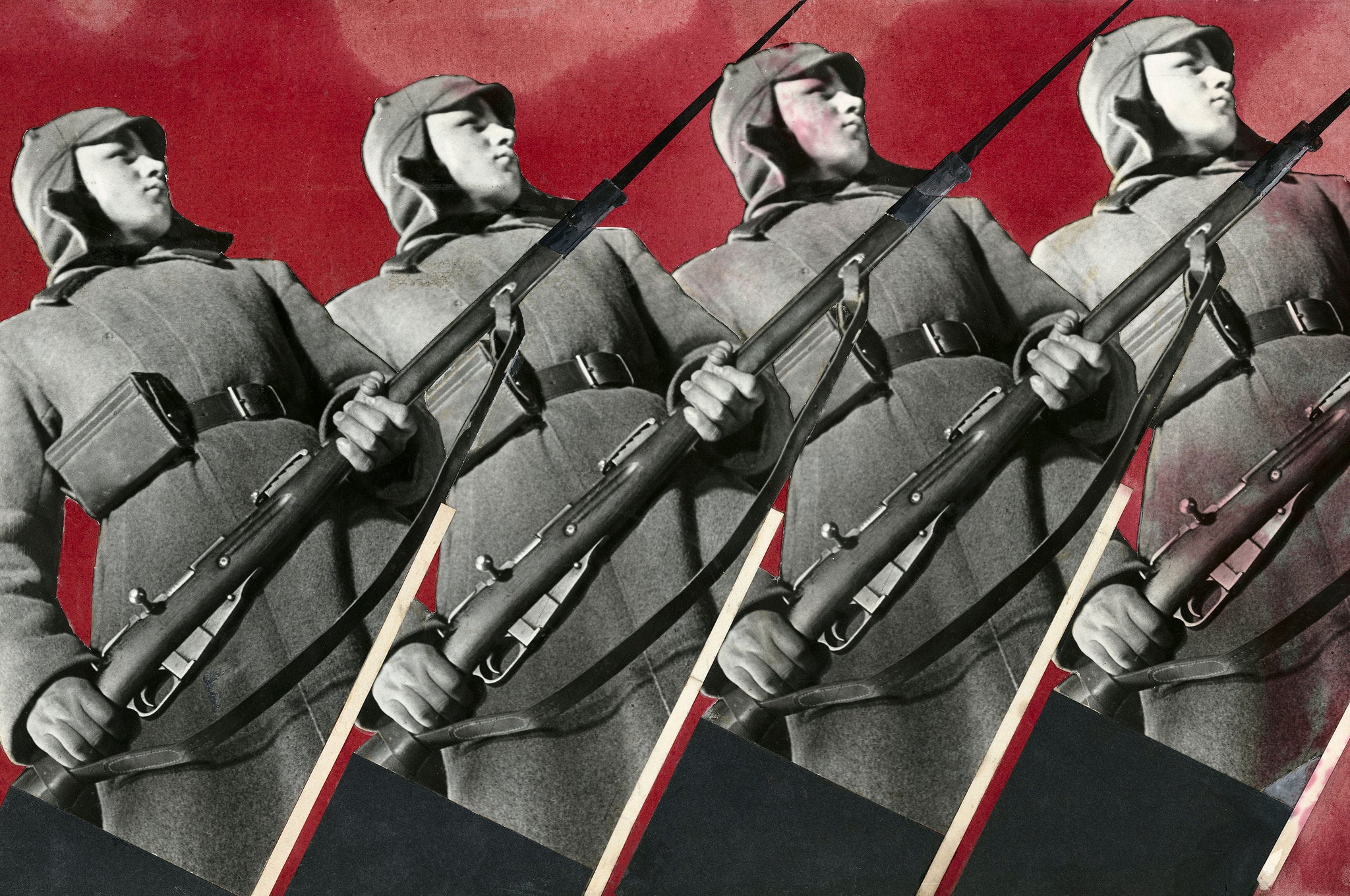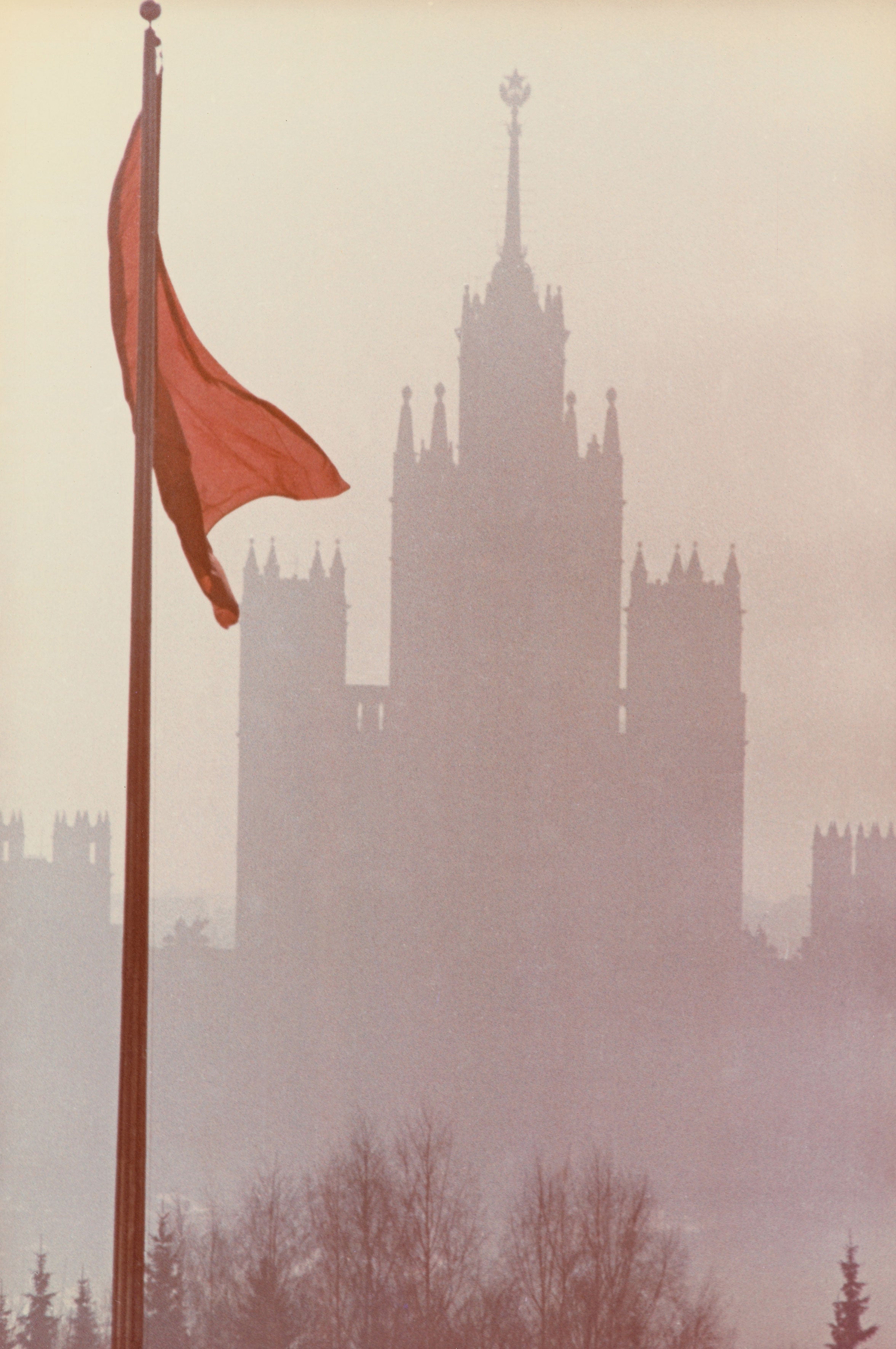From Russia with Lies: Colour photographs reveal how a new medium soon fell victim to propaganda
No images of food not available in the USSR were permitted, at the risk of tormenting the hungry populace to the point of social unrest

A new exhibition, Primrose: Early Colour Photography in Russia, has just opened at the Photographers’ Gallery, London.
It is timely: last week, a new law came into effect that further restricts Russia’s internet, a space that has enabled relative freedom of speech while the mainstream media is heavily censured by Putin’s regime. Those who wish to understand the events of the past few months in light of the long history of ideological control in Russia will enjoy this exhibition.
It explores the attempts of successive regimes to dictate reality through images. From the 19th century to the 1970s, the 140 works on display appear paranoid and paralysed. There is a mood of forced serenity. They give away almost nothing; at the same time, they can’t help but reveal clues about what’s really going on. To look at them is to search for subtext. These photographs reflect the demands of political power, but never perfectly. What is most fascinating are the cracks in the official facade.

Many of the works are paradoxical: they are tense and lethargic, exposing and closed. The title of the exhibition – Primrose – means “first colour” in Russian. Although Kodak appeared just before the Second World War, colour photography remained the preserve of a few official photographers for decades. Colour negatives were not available until the 1970s, when underground culture began to grow. This exhibition begins and ends in periods of censorship; there is no fresh air.
The first part is devoted to the period before the Bolshevik revolution of 1917. Colour photography first appeared in the 1860s in Russia, and families with money were keen to commission portraits of themselves. The Tsar himself was obsessed with the medium. These early images were in fact black and white, hand-painted with watercolours and oils. Despite the enthusiasm for colour at this time, what is striking is the dominance of black.
A series of family portraits by A Nechayev from the 1860s show women looking tragic and angry. One shows an elderly woman in a widow’s lace veil, staring reproachfully at the viewer. Her skin is illumined by the faintest pink. Equally strange are the attempts to create an idea of nationhood. There is a photograph of a doll in “Asiatic costume” from the 1867 Ethnographic Exhibition in Moscow. She wears red, her expression deadened.

The second part of the exhibition focuses on post-revolution colour photography, and it is more dramatic, aesthetically varied, and unsettling. Lenin was keen on photographic reportage but the images of mass starvation and civil war that emerged in the early 1920s were at odds with the utopian ideals of the revolution.
From the mid-1920s, photomontage was favoured by the regime: it incorporated elements of photography, and therefore seemed to represent objective reality, but it was highly stylised according to a constructivist aesthetic inspired by Kazimir Malevich’s Suprematism of the decade before. Indeed, this exhibition is a good companion to the wonderful Malevich exhibition at Tate Modern. Here, Malevich’s stark red, black, and white palette is redeployed in the service of the state.
Red Army Men (1930) is a classic piece of propaganda. It is a photomontage by the constructivist artist Varvara Stepanova. It shows a photograph of a young soldier in uniform, grimly holding onto his rifle; he is multiplied four times, mirroring himself, to create an army of clones. This is a goal of pure uniformity, realised. The image is dynamic and geometric, with a background in the vivid communist red that dominated so much of official artwork. In fact, much of the colour photography of the period is black and white with splashes of red, as though that were the only colour in existence.
Stepanova was married to fellow artist Alexander Rodchenko; the constructivists viewed photomontage as a visual weapon. In a country where 70 per cent of the population were illiterate, the image was indeed a powerful and important means of communication. Rodchenko’s photomontage of Lenin’s funeral in 1924 is stylish and disturbing. Various portraits are included in the work: Lenin lying dead, Lenin standing casually, Lenin laughing in an unnerving way. The background is adorned with bright red rays that seem to fall down religiously, although of course the regime banned religion.
Be Ready! (1932) by Stepanova was made in the same year that Stalin decreed Socialist Realism to be the single approved art form in the USSR. In the words of the curator Olga Sviblova: “Soviet art was obliged to reflect Soviet myths about the happiest people in the happiest country on earth, and not real life.”
Stepanova’s photomontage includes a photograph by Rodchenko of a young, beautiful Russian woman, her blonde hair blowing across her face, her expression stoic and purposeful, seemingly frowning under the heat of the sun, or perhaps frowning under the weight of the responsibility of fulfilling the nation’s destiny. 1932-3 was a time of famine in which millions died due to Stalin’s forced collectivisation policies.
Love and eroticism were not subjects allowed by Socialist Realism. Sviblova writes: “The corporeal and sexuality were signs of an independent personality. It was this personality which the Soviet system tried to level, crushing it, opposing it with communal generality and the faceless we of the Soviet people.” However, several images here contradict that rule; they show intimacy in a threatened light.
Rodchenko’s portrait of Regina Lemberg, with whom he had an affair, is striking. The tenderness of the image is overwhelmed by a nightmarish quality. Lemberg is captured up-close, lit from below, so that her long neck looks like pure marble and the curves of her face are cast in shadow. Her eyes and teeth gleam; her lips are painted communist red, which suggests her sensuality is somehow at one with the regime.
Even the most seemingly innocuous subjects were highly ideological. Two still lifes of fruit by Ivan Shagin are displayed; they were taken in 1949 for recipe books. The first shows a basket of pears, apples, and grapes. The second shows two lemons and a few artlessly splayed slices. The photographs are dull and quaint, but heavily controlled; no images of food not available in the USSR were permitted, at the risk of tormenting the hungry populace to the point of social unrest.
Stalin died in 1953. His cult of personality is captured surreally in Dmitri Baltermants’ official funeral photograph. Stalin lies surrounded by a tropical paradise of flowers; a dusky, celestial light appears in the top-right-hand corner of the image. His death marked the beginning of a slow “thaw” in the USSR, and several other remarkable photographs by Baltermants from the 1950s show an uneasy kind of relaxation. Here colour enters in full.
Possibly the most powerful photograph in the exhibition is Men’s Talk (1950s) by Baltermants. It shows an outdoor public scene, disorderly rather than uniform. People are sitting in rows, seemingly waiting for something to begin to the right, out of shot. The star of the image is a woman in the centre.
Far from being a flaxen-haired, robustly healthy poster-girl of collectivisation, she is heavy-set with a broad bosom contained in a tight orange jumper. Her hand is gesturing and the expression on her face is animalistic: her sharp white teeth are bared and her features are screwed up in rage or disgust.
While everyone else looks to the right, she looks forwards, a mark of individuality not present in earlier crowd scenes. Her two young sons smile blandly. Far from staged reportage, the scene appears naturalistic. The woman seems to symbolise a desire to speak turned wild with repression. Or perhaps the photograph merely lends itself to that interpretation in light of Russia’s history. Much of the drama of these later works is due to that fact that they evade the viewer, and make us guess. What seems sure is the sense of near violence.
Primrose: Early Colour Photography in Russia, the Photographers’ Gallery, London W1 (020 7087 9300) to 19 October
Join our commenting forum
Join thought-provoking conversations, follow other Independent readers and see their replies
Comments